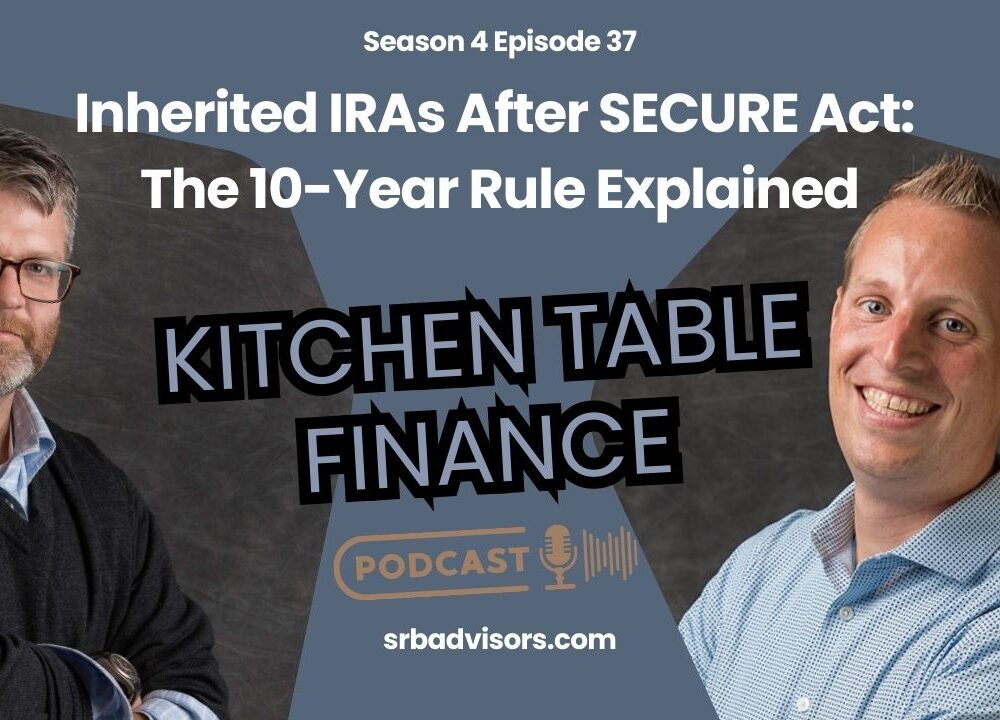Student Debt Relief Plan

Podcast: Play in new window | Download
Join Dave and Nick as they review the Student Debt Relief Plan and go over some options.
Here are the main points from this episode:
- $10,000 of student loan forgiveness for Federal student loan borrowers (and $20,000 for borrowers who received a Pell Grant for college) with income levels under $125,000 for single borrowers and $250,000 for married couples.
- Relevant tax years are 2020 & 2021
- Not necessary for income to be below in both years. If it was below in either 2020 or 2021 you qualify
- No federal income tax consequences for forgiveness
- States may vary
- In general, only federal loans funded by June 30, 2022 qualify (existing debt consolidated after deadline still eligible
- Federal loans for graduate school are eligible
- Parent Plus loans are also eligible
- $10,000 total not $10,000 per kid
- Current students eligible
- Some borrowers already have income information on file and will automatically receive forgiveness
- Others will have to file an application that should be out soon.
- Borrowers who want updates directly from the U.S. Department of Education can sign up to receive them by visiting https://studentaid.gov/debt-relief-announcement/.
- If you already paid off your student loan between March 13, 2020, and now you can still request a refund as a part of the cares act.
- If the balance is below the forgiveness amount you can request a refund and potentially qualify for forgiveness. Don’t have full clarity on this yet.
- Low-risk strategy as you can always put the money refunded to you back towards the loan by January and not have to pay interest on it
- Final extension on a pause of Federal student loan payments until December 31, 2022
- Changes to Public Service Loan Forgiveness eligibility
- A new income-driven repayment plan that may be significantly more generous than the others
- The newly proposed IDR plan is substantially more generous than other IDR plans, as borrowers will be required to pay only 5% of their discretionary income towards undergraduate loans, and 10% towards graduate loans. By contrast, other IDR plans require payments of 10%, 15%, or 20% of discretionary income
- Questions remain
- who will be eligible for the plan?
- What loan types are eligible?
- Will any interest accrue while borrowers are in school and not yet in repayment status?
- How will married couples with both individuals on IDR plans be handled?
- Can married couples file taxes separately so that income from only the borrowing spouse is used to calculate monthly payments?
- Action items
- Your prior strategy may have been to pay the debt down to $0. But, with the PSLF Waiver and the 34 months (i.e., from March 2020 to December 2022) of PSLF credits borrowers are potentially eligible for throughout the payment freeze, PSLF may be a far better option now.
- Conversely, some borrowers may have been on a path to PSLF but are now eligible to have either $10,000 or $20,000 of their loan balance canceled from the new Student Loan Debt Relief Plan. Depending on the new loan balance after the cancelation, their total payoff costs could be lower if they were to just pay their debt down to $0 than they are to get to their 120 required payments for PSLF.
Let us know if you have any questions regarding your Student Debt Relief Plan.
About Shotwell Rutter Baer
Shotwell Rutter Baer is proud to be an independent, fee-only registered investment advisory firm. This means that we are only compensated by our clients for our knowledge and guidance — not from commissions by selling financial products. Our only motivation is to help you achieve financial freedom and peace of mind. By structuring our business this way we believe that many of the conflicts of interest that plague the financial services industry are eliminated. We work for our clients, period.
Click here to learn about the Strategic Reliable Blueprint, our financial plan process for your future.
Call us at 517-321-4832 for financial and retirement investing advice.
Share post:
